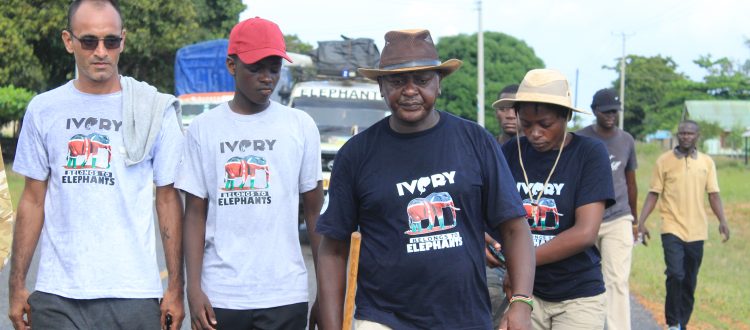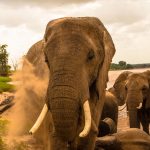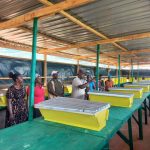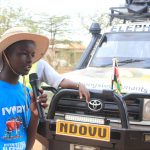The Tsavo-Shimba Elephant campaign walk
The long awaited Tsavo East – Shimba Hills – Lunga Lunga Elephant Campaign Walk came to an end on the 18th of December, 2022. This edition took 18 days covering a total distance of about 357 KM, passing through different eco-regions; some cold, some mild and some very hot. The main purpose of this walk was to raise awareness on wildlife conservation using elephants as flagship species, and to sensitize local communities within Taita Taveta and Kwale County governments prerequisite of opening the existing wildlife corridors.Wildlife migratory corridors connect core habitats and are critical for species survival and long-term feasibility of ecosystems.
The elephant count has seen a disappointing decline due to poaching and habitat destruction. If we do not stop this rot and oppression suffered by elephants and wild animals in the large scale, it willl not only be the end of elephants but other animals and useful plant species that depend on the ‘big guy’ too.
We must look at the long-term approach when it comes to mitigating human-wildlife conflict. Compensation of attacks by wild animals is a short-term approach which is not sustainable when looked at in the large scale. Let us deal with the real issues. The biggest challenge in implementing environmental and conservation policies is lack of political goodwill and ignorance. This is what has kept me on the campaign eradicating perpetual negative attitude towards environmental and conservation issues.
My team and I visited Mwaluganje Elephant Sanctuary which is situated within the Shimba Hills ecosystem and consists of land donated by community members for conservation purposes in the hope of ultimately obtaining income for a good cause. Kenya Wildlife Service in liaison with the National Government plans to translocate 15 elephants from a zoo in United Kingdom and add on to the gene pool of the ecosystem. The idea is embraced by community members as the plan involves ‘establishment of conservation projects such as bee keeping projects and building of an information center’ says a resident from Kibaoni in Kinango Sub-County.
About 70% of wildlife live outside national parks and reserves. In ten years, these animals will not be there due to the pressure that is imposed on them. Let us save wildlife for both our benefit and the benefit of future generations through sustainable practices.
Kenya Wildlife Service plays a key role in mitigating human-wildlife conflicts and wildlife conservation . The institution is however not well equipped with the necessary tools and this cripples conservation efforts alongside reducing the morale of workers in the field. I am making a clarion call to the National Government to support Kenya Wildlife Service and equip them with the necessary work tools that they need in order to propel the conservation field and work at optimum conditions; tourism revenue is simply not enough to learn the organisation.
Throughout this campaign walk, I have witnessed a lot of incidences surrounding charcoal burning, majorly in the route from Voi to Samburu , Kinango and partly in Lunga Lunga areas. Charcoal burning is the main factor leading to deforestation in these areas, contributing largely to reduced rainfall, and increased/erratic drought conditions affecting both man and animals. The individuals undertaking these practices lack the capacity to facilitate their upkeep otherwise and a key reoccurring theme is lack of awareness and ignorance. The National Government needs to take this up and boost the capacity of individuals living in marginalized areas in order to create a true difference in the conservation space.
I will continue to encourage community members (Youth, Women and Men), to be strategic and identify opportunities that will advance sustainable models of living. In my emphasis, I urge communitIes to form groups, either Community Based Organisations (CBOs) or self – help groups, that may attract conservation and environmental donors. This is the only way we will be able to stop charcoal burning, reduce deforestation and increase tree coverage, which will in turn lead to a healthy environment. Stopping deforestation can significantly address numerous challenges including: protection of millions of animal and plant species, mitigation of global warming, flood prevention, restoration of indigenous livelihood, and above all, investing in a more sustainable future.
As of today, I have walked about 21,357 KM since my first walk in 2013 both nationally and internationally. With each Elephant Campaign Walk, I am more empowered to keep on knowing that I get to impact a lot of lives and make efforts to better the environmental conditions and consequently livelihoods of both current and future generations; ‘TowardsANewConservationModel’ .
Jim Justus Nyamu Cd’e OGW .. the founder and the lead campaigner of Ivory Belongs to Elephants




